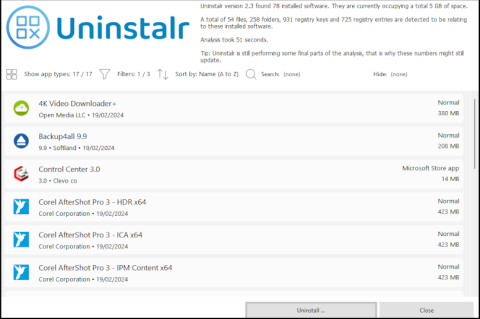Die T-Serie beschäftigt sich mit Terminals für Telematikdienste und dem Bildkompressionsverfahren JPEG 2000.
T.0
Classification of facsimile terminals for document transmission over the public networks
T.1
Standardization of phototelegraph apparatus
T.4
Standardization of Group 3 facsimile apparatus for document transmission
T.5
Test methodology for Group 3 facsimile processing equipment in the Public Switched Telephone Network
This text was first approved and published as ITU-T Rec. G.511, and then renumbered as T.5 on 2002-02-15 without further modification
T.6
Facsimile coding schemes and coding control functions for Group 4 facsimile apparatus
T.10
Document facsimile transmissions on leased telephone-type circuits
T.10 bis
Document facsimile transmissions in the general switched telephone network
T.22
Standardized test charts for document facsimile transmissions
T.23
Standardized colour test chart for document facsimile transmissions
T.24
Standardized digitized image set
T.30
Procedures for document facsimile transmission in the general switched telephone network
T.31
Asynchronous facsimile DCE control - Service Class 1
T.32
Asynchronous facsimile DCE control - Service Class 2
T.33
Facsimile routing utilizing the subaddress
T.35
Procedure for the allocation of CCITT defined codes for non-standard facilities
T.36
Security capabilities for use with Group 3 facsimile terminals
T.37
Procedures for the transfer of facsimile data via store-and-forward on the Internet
T.38
Procedures for real-time Group 3 facsimile communication over IP networks
T.39
Application profiles for simultaneous voice and facsimile terminals
T.42
Continuous tone colour representation method for facsimile
T.43
Colour and gray-scale image representations using lossless coding scheme for facsimile
T.44
Mixed Raster Content (MRC)
T.45
Run-length colour encoding
T.50
International Reference Alphabet (IRA) (Formerly International Alphabet No. 5 or IA5) - Information technology - 7-bit coded character set for information interchange
T.51
Latin based coded character sets for telematic services
T.52
Non-latin coded character sets for telematic services
T.53
Character coded control functions for telematic services
T.60
[Withdrawn] Terminal equipment for use in the teletex service
T.62
Control procedures for teletex and Group 4 facsimile services
T.62 bis
Control procedures for teletex and G4 facsimile services based on Recommendations X.215 and X.225
T.63
[Withdrawn] Provisions for verification of teletex terminal compliance
T.64
[Withdrawn] Conformance testing procedures for the teletex Recommendations
T.65
[Withdrawn] Applicability of telematic protocols and terminal characteristics to computerized communication terminals (CCTs)
T.66
Facsimile code points for use with Recommendations V.8 and V.8 bis
T.70
Network-independent basic transport service for the telematic services
T.71
Link access protocol balanced (LAPB) extended for half-duplex physical level facility
T.80
Common components for image compression and communication - Basic principles
T.81
Information technology - Digital compression and coding of continuous-tone still images - Requirements and guidelines
T.82
Information technology - Coded representation of picture and audio information - Progressive bi-level image compression
T.83
Information technology - Digital compression and coding of continuous-tone still images: Compliance testing
T.84
Information technology - Digital compression and coding of continuous-tone still images: Extensions
T.85
Application profile for Recommendation T.82 - Progressive bi-level image compression (JBIG coding scheme) for facsimile apparatus
T.86
Information technology - Digital compression and coding of continuous-tone still images: Registration of JPEG Profiles, SPIFF Profiles, SPIFF Tags, SPIFF colour Spaces, APPn Markers, SPIFF Compression types and Registration Authorities (REGAUT)
T.87
Information Technology - Lossless and near-lossless compression of continuous-tone still images - Baseline
T.88
Information technology - Coded representation of picture and audio information - Lossy/lossless coding of bi-level images
T.89
Application profiles for Recommendation T.88 - Lossy/lossless coding of bi-level images (JBIG2) for facsimile
T.90
Characteristics and protocols for terminals for telematic services in ISDN
T.100
International information exchange for interactive videotex
T.101
International interworking for videotex services
T.102
Syntax-based videotex end-to-end protocols for the circuit mode ISDN
T.103
Syntax-based videotex end-to-end protocols for the packet mode ISDN
T.104
Packet mode access for syntax-based videotex via PSTN
T.105
Syntax-based videotex application layer protocol
T.106
Framework of videotex terminal protocols
T.107
Enhanced man machine interface for videotex and other retrieval services (VEMMI)
T.120
Data protocols for multimedia conferencing
T.121
Generic application template
T.122
Multipoint communication service for audiographics and audiovisual conferencing service definition
T.123
Network specific data protocol stacks for multimedia conferencing
T.124
Generic Conference Control
T.125
Multipoint communication service protocol specification
T.126
Multipoint still image and annotation protocol
T.127
Multipoint binary file transfer protocol
T.128
Multipoint application sharing
T.134
Text chat application entity
T.135
User-to-reservation system transactions within T.120 conferences
T.136
Remote device control application protocol
T.137
Virtual meeting room management for multimedia conferencing audiovisual control
T.140
Protocol for multimedia application text conversation
T.150
Telewriting terminal equipment
T.171
Protocols for interactive audiovisual services: Coded representation of multimedia and hypermedia objects
T.172
MHEG-5 - Support for base-level interactive applications
T.173
MHEG-3 script interchange representation
T.174
Application programming interface (API) for MHEG-1
T.175
Application Programming Interface (API) for MHEG-5
T.176
Application Programming Interface (API) for Digital Storage Media Command and Control (DSM-CC)
T.180
Homogeneous access mechanism to communication services
T.190
Cooperative Document Handling (CDH) - Framework and basic services
T.191
Cooperative document handling - Joint synchronous editing (point-to-point)
T.192
Cooperative Document Handling - Complex services: Joint synchronous editing and joint document presentation/viewing
T.200
[Withdrawn] Programming communication interface for terminal equipment connected to ISDN: General architecture
T.300
General principles of telematic interworking
T.330
Telematic access to interpersonal message system
T.351
Imaging process of character information on facsimile apparatus
T.390
Teletex requirements for interworking with the telex service
T.411
Information technology - Open Document Architecture (ODA) and interchange format: Introduction and general principles
T.412
Information technology - Open Document Architecture (ODA) and interchange format: Document structures
T.413
Information technology - Open Document Architecture (ODA) and interchange format: Abstract interface for the manipulation of ODA documents
T.414
Information technology - Open Document Architecture (ODA) and interchange format: Document profile
T.415
Information technology - Open Document Architecture (ODA) and interchange format: Open document interchange format (ODIF)
T.416
Information technology - Open Document Architecture (ODA) and interchange format: Character content architectures
T.417
Information technology - Open Document Architecture (ODA) and interchange formats: Raster graphics content architectures
T.418
Information technology - Open Document Architecture (ODA) and interchange format: Geometric graphics content architecture
T.419
Information technology - Open Document Architecture (ODA) and interchange format: Audio content architectures
T.421
Information technology - Open Document Architecture (ODA) and interchange format: Tabular structures and tabular layout
T.422
Information technology - Open Document Architecture (ODA) and interchange format - Identification of document fragments
T.424
Information technology - Open Document Architecture (ODA) and interchange format: Temporal relationships and non-linear structures
T.431
Document Transfer And Manipulation (DTAM) - Services and protocols - Introduction and general principles
T.432
Document Transfer And Manipulation (DTAM) - Services and protocols - Service definition
T.433
Document Transfer And Manipulation (DTAM) - Services and protocols - Protocol specification
T.434
Binary file transfer format for the telematic services
T.Imp434
BFT Implementor's guide (T.434 Version 2)
T.435
Document Transfer And Manipulation (DTAM) - Services and protocols - Abstract service definition and procedures for confirmed document manipulation
T.436
Document Transfer and Manipulation (DTAM) - Services and protocols - Protocol specifications for confirmed document manipulation
T.441
Document Transfer And Manipulation (DTAM) - Operational structure
T.501
Document application profile MM for the interchange of formatted mixed mode documents
T.502
Document application profile PM-11 for the interchange of simple structure, character content documents in processable and formatted forms
T.503
A document application profile for the interchange of Group 4 facsimile documents
T.504
Document application profile for videotex interworking
T.505
Document application profile PM-26 for the interchange of enhanced structure, mixed content documents in processable and formatted forms
T.506
Document application profile PM-36 for the interchange of extended document structures and mixed content documents in processable and formatted forms
T.510
General overview of the T.510-Series Recommendations
T.521
Communication application profile BT0 for document bulk transfer based on the session service
T.522
Communication application profile BT1 for document bulk transfer
T.523
Communication application profile DM-1 for videotex interworking
T.541
Operational application profile for videotex interworking
T.561
Terminal characteristics for mixed mode of operation MM
T.562
Terminal characteristics for teletex processable mode PM.1
T.563
Terminal characteristics for Group 4 facsimile apparatus
T.564
Gateway characteristics for videotex interworking
T.571
Terminal characteristics for the telematic file transfer within the teletex service
T.611
Programming Communication Interface (PCI) APPLI/COM for facsimile Group 3, facsimile Group 4, teletex, telex, E-mail and file transfer services
T.800
Information technology - JPEG 2000 image coding system: Core coding system
T.801
Information technology - JPEG 2000 image coding system: Extensions
T.802
Information technology - JPEG 2000 image coding system: Motion JPEG 2000
T.803
Information technology - JPEG 2000 image coding system: Conformance testing
T.804
Information technology - JPEG 2000 image coding system: Reference software
T.807
Information technology - JPEG 2000 image coding system: Secure JPEG 2000
T.808
Information technology - JPEG 2000 image coding system: Interactivity tools, APIs and protocols
T.810
Information technology - JPEG 2000 image coding system: Wireless
T.851
ITU-T T.81 (JPEG-1)-based still-image coding using an alternative arithmetic coder
T.870
Information technology - Lossless and near-lossless compression of continuous-tone still images: Extensions
Supplements
T.Sup1
Conformance testing requirements for Recommendations of the T.170-series


